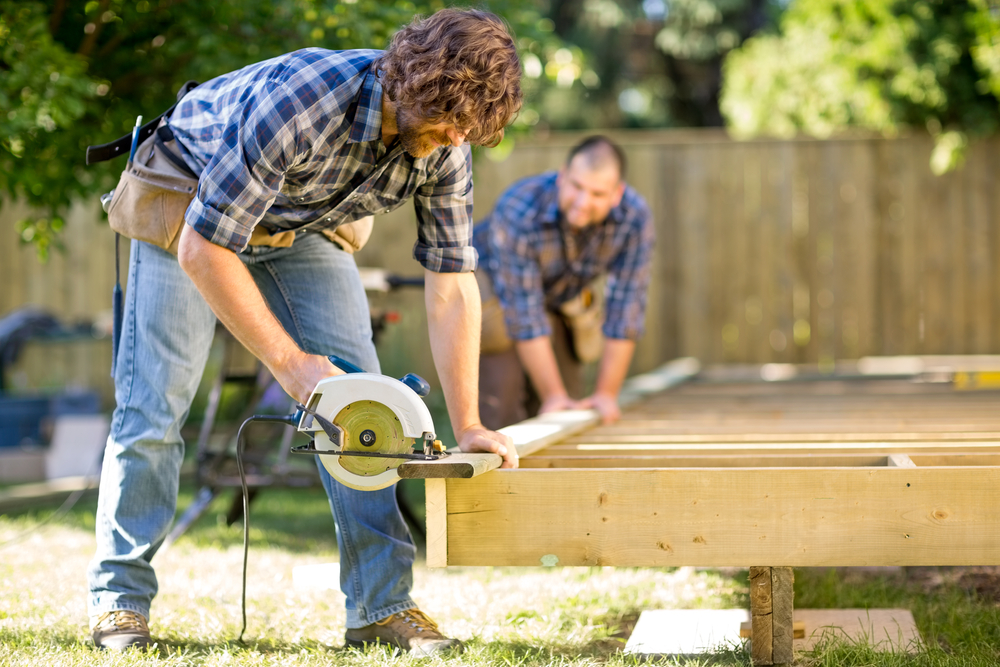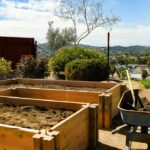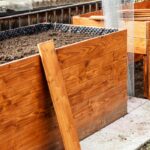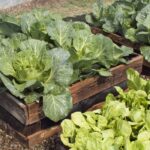Knowing if you can use pressure-treated wood in your gardens can save someone from accidentally leaching harmful chemicals into their soil. However, not all treated wood is made equally, and understanding the difference and the risks associated with each kind is essential if you are considering using pressure-treated wood in building your raised garden beds.
Treated lumber is chemically treated wood. If you’re using treated wood, there are a few precautions you can take to limit exposure to the chemicals in the treated wood, such as lining your bed with plastic, keeping crops 10 inches away from the side, and peeling your root vegetables thoroughly.
Treated lumber is not recommended in home furnishings and is not allowed around organic food. That said, it can still be used in your home garden if you take extra precautions to minimize crop exposure. If you decide you would rather not take the risk, great alternatives are always great, such as cedar or stone.
What is Treated Lumber?
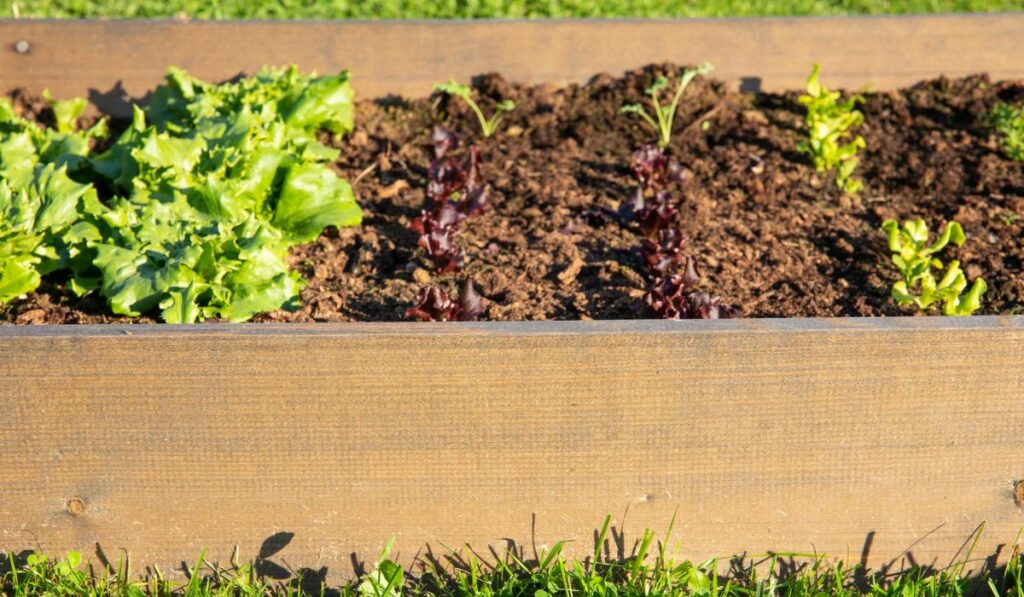
Treated lumber is wood treated with chemicals to preserve it from rot, weather, and pests. Adding these preservatives help prolong the life of the wood by making it resistant to many problems natural wood often succumbs to.
Things such as fungus, termites, water organisms, and structural degradation or rot can cause significant problems in natural wood that can wear it down and ruin its integrity over time. Treating the wood negates many of these issues, or at least makes the wood more resistant to them.
Is Treated Lumber Safe for Raised Garden Beds?
Before December 31, 2003, treated wood used a compound known as chromate copper arsenate or CCA. The Environmental Protection Agency, also known as EPA, banned this kind of treated wood for residential use due to its toxic properties.
Regarding gardening, there were concerns that this chemical compound would leach arsenic into the soil and contaminate plants and people.
The compounds in current use are alkaline copper quat, or ACQ, and copper azole, or CA-B. Both are copper compounds with fungicides but contain no arsenic. The copper keeps insects from damaging the wood, while the fungicide prevents fungi from growing.
In ACQ, the fungicide is known as quat also used in swimming pools as a disinfectant. CA-B uses a fungicide known as tebuconazole, which is used in food crops. Brands that use these two compounds are NatureWood, Wolmanized Outdoor, and Natural Select.
Despite these common uses, Miles McEvoy, an organic certification employee for the Washington State Department of Agriculture, has stated that no pressure-treated wood is allowed in soils used to grow organic food. So, if you want to grow your own organic food, you must find an alternative to pressure-treated wood to build your raised gardens.
Studies have shown that copper has leached from ACQ and CBA, a variant of CA-B, into soils. So although it is still less toxic than arsenic, it’s probably not the best to use when growing your own food.
Will Treated Wood Contaminate Your Fruits and Vegetables?
Pressure-treated wood is safe in construction, but it’s not recommended for gardens you want to grow crops around. Studies have shown that, although the copper does leach from the pressure-treated wood, it is in trace amounts that are hardly detected. Also, if a plant absorbs too much copper, it will die long before people can consume it.
That said, if you want wholly organic produce, it is best to avoid pressure-treated wood altogether.
If you do plan to use pressure-treated wood in building your raised garden bed or have some in your garden already, there are a few things you can try to minimize exposure to harmful chemicals:
- If possible, plant your crops away from the walls made up of treated wood with a minimum of 10 inches. This will help prevent copper or arsenic from leaching into your vegetables’ soil.
- If building your raised garden bed from pressure-treated wood, then line the wooden frame with a plastic liner. This creates a barrier between the harmful wood and the soil that will keep your plants safe and avoid cross-contamination.
- Peel rooted crops before you eat them. The root of the plant, and in root vegetable cases, the part we eat, absorbs more copper than any other part of the plant. Therefore, peeling the root can help remove trace amounts of copper before consumption.
- Wash all root crops before eating, which will help minimize the exposure.
If There is Already CCA Treated Wood in Your Garden
Sally Brown, a research assistant professor of soils at the University of Washington, has stated that if you have found older, arsenic-treated wood, or CCA, in your garden or near it, you don’t need to panic.
This is because plants will not leach up the arsenic unless the soil is deficient in phosphorus. Thankfully, if you use a lot of compost in your garden, that will not be an issue.
However, if you have noticed there is old CCA pressure-treated wood in your yard, then there are a few measures you can take to help minimize exposure and contamination:
- Plant your gardens away from it, so the soil growing your food doesn’t leach harmful chemicals into your produce.
- You can apply a sealer to the treated wood to protect against exposure to CCA’s arsenic. A good and often easily found sealer is oil.
- Instead of using CCA-treated wood, if possible, replace it with concrete blocks, plastic lumber, bricks, or stones. Even ACQ-treated wood is safer than CCA if you must use treated wood at all.
- Don’t allow the sawdust from CCA-treated wood to leach into your garden beds. Instead, construct the raised bed elsewhere, and be sure the wind doesn’t carry it into your soil.
- Install heavy plastic covers to cover any CCA-treated wood to prevent any contact with your soil.
- Peel root vegetables to remove trace copper, chromium, and arsenic compounds.
- Space your vegetables at least 10 inches away from high concentrations of CCA.
- Thoroughly wash all vegetables from your garden before eating them, especially root vegetables like carrots, parsnips, and potatoes.
How to Know if Your Wood Has Been Treated
There are several tells that allow you to know if the lumber you have is pressure-treated. Knowing the signs and what to look for is key to avoiding this kind of lumber when it comes to your organic garden:
- End Tags: An end tag is a stamp with the name of the preservative. It often contains the name of the preservation company and the rating.
- Stamps: On the lumber, you will find L P22 stamps that designate the wood as treated with arsenic. While L P2 is not as harmful, it is still not recommended for home furnishings. Borate-treated lumber has Bor, Hi Bor, or Tim Bor stamped on it and is safe for home use. The safest treated wood is stamped with FDN.
- Color: Treated wood will have a pale olive or green tinge. Putting it next to natural wood, it becomes easily recognizable. Borate-treated wood has a blue color to it and is often used to keep termites away.
- Scent: If there is no end tag or stamp or you can’t notice the color, you should try to see if it has a distinct smell. Treated wood has an oily or chemical smell, while natural wood is fresh and has that woody smell. However, a lack of scent does not mean it isn’t treated.
- Using a Wood Testing Kit: The last thing you can do if you can’t identify your lumber as treated or natural is purchase a wood testing kit.
Here Are Some Alternatives to Treated Lumber
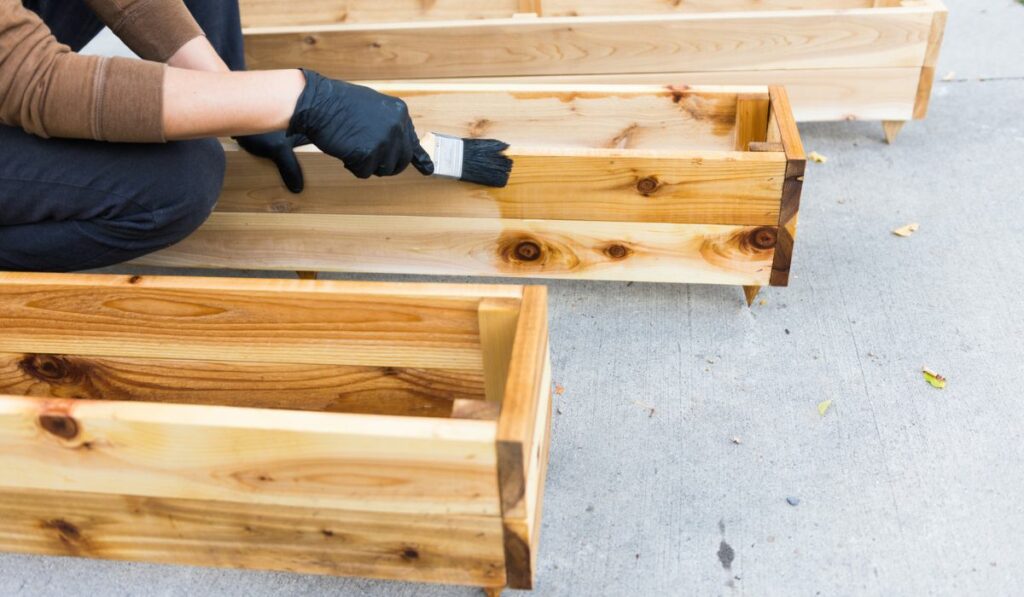
If you don’t want to run the risks of using pressure-treated wood, there are several alternatives you can use that are equally, if not better options:
- Cedar: Long lasting, rot, and pest resistant; cedar wood looks great and smells fantastic. However, these benefits do come at a higher cost.
- Juniper: Long lasting, roughly 4 to 7 years, and less expensive than cedar.
- Stonework: Extremely long-lasting and durable, you don’t have to worry about rot, pests, or decay.
- Plastic: Repurposed child-sized swimming pools or barrels are great recycling efforts and are generally cheap.
- Metal: Old bathtubs and barrels make great repurposed garden beds that can be cheap if you already have them. They last a long time and won’t rot or succumb to pests.


